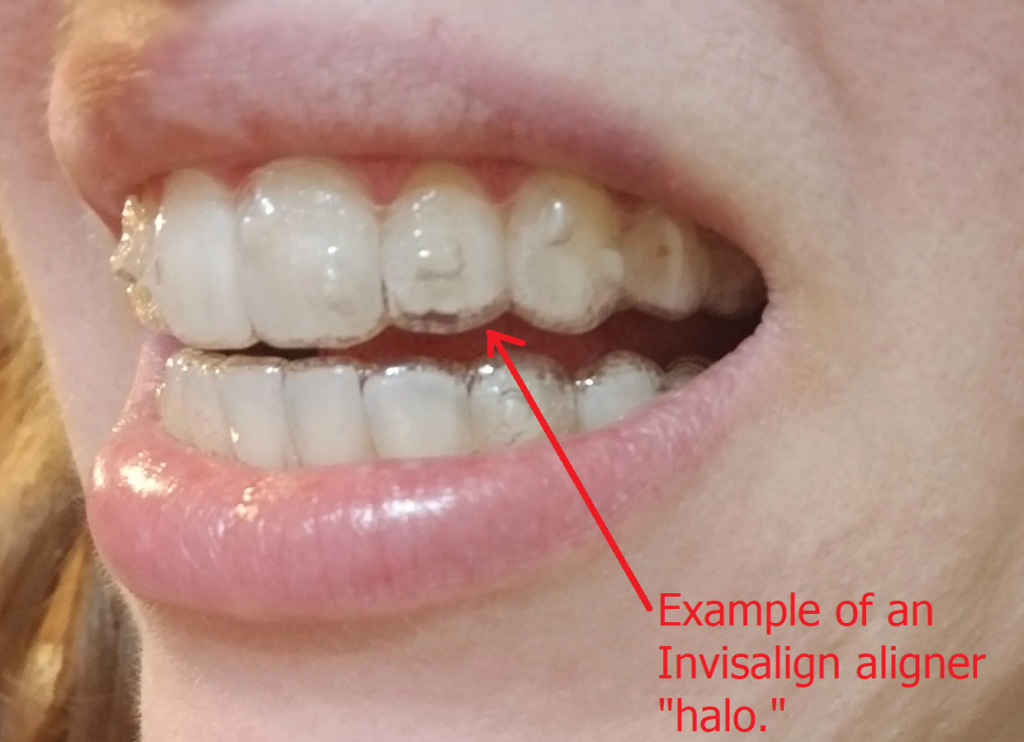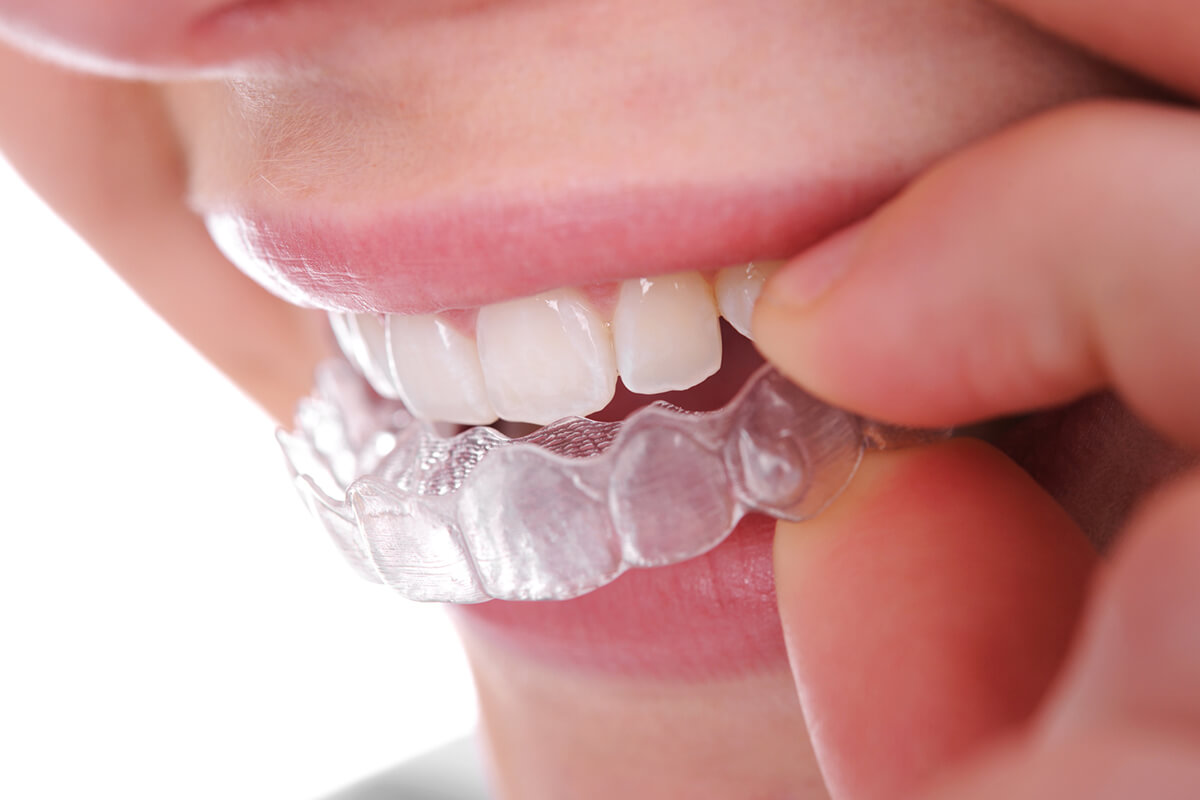Top Factors to Pick Invisalign Over Other Orthodontic Treatments
Top Factors to Pick Invisalign Over Other Orthodontic Treatments
Blog Article
Invisalign vs. Typical Braces: Which Choice Is Right for You?
When thinking about orthodontic treatment, the choice in between Invisalign and typical dental braces provides a number of essential factors that warrant mindful analysis. Invisalign uses a discreet alternative with detachable aligners, while standard braces provide an extra visible yet effective solution for extreme misalignment.
Overview of Therapy Choices

On the other hand, conventional dental braces are composed of metal brackets and wires that are bound to the teeth. This approach uses continual pressure gradually to attain positioning. While reliable for intricate orthodontic problems, typical braces need normal sees for adjustments and can position difficulties in preserving dental health due to the difficulty of cleaning up around cords and braces.
Both options have their benefits, and the option commonly rests on details dental conditions, lifestyle preferences, and client conformity. Ultimately, speaking with an orthodontic expert is important for figuring out the most suitable therapy strategy customized to private needs. Recognizing the subtleties of each alternative can considerably influence the general success of orthodontic therapy.
Aesthetic Considerations
A significant element influencing the choice between Invisalign and traditional dental braces is the visual charm each treatment provides. Invisalign aligners are crafted from clear plastic, making them virtually undetectable when used. This discreet look is specifically attracting teenagers and grownups who may really feel awkward about their orthodontic therapy. The capability to maintain an all-natural smile throughout the placement process can significantly boost the patient's confidence in specialist and social setups.
In comparison, conventional dental braces include steel brackets and cords, which can be much more recognizable. While innovations in orthodontic innovation have actually brought about the advancement of smaller sized brackets and tinted elastics, conventional dental braces still maintain a more obvious profile. For some people, the visibility of braces might deter them from seeking essential treatment.
Eventually, the choice in between Invisalign and typical braces might rest on personal choices pertaining to aesthetics. Clients that focus on discretion commonly favor Invisalign, while those who are less worried concerning visibility may choose for typical braces. Comprehending the visual effects of each option is essential for making a notified choice that straightens with one's lifestyle and preferences.
Comfort and Convenience

In regards to comfort, Invisalign aligners are removable, enabling clients to enjoy their favored foods without constraint and preserve optimal dental hygiene. Cleaning and flossing address are streamlined, as the aligners can be gotten throughout these regimens, whereas conventional dental braces need careful steering around brackets and wires.
In comparison, traditional dental braces necessitate routine changes, making them less practical for those with active schedules. Generally, the convenience and convenience of Invisalign make it an attractive selection for numerous people seeking orthodontic treatment.
Therapy Period and Efficiency
While both Invisalign and typical braces work in correcting dental imbalances, the period of treatment can vary dramatically between the two choices. Commonly, Invisalign treatment can take anywhere from 12 to 18 months, depending on the intricacy of the instance. The clear aligners function by gradually shifting teeth right into their wanted positions, and routine follow-ups with an orthodontist assistance make certain progress remains on track.
In contrast, standard dental braces commonly need a longer commitment, normally varying from 18 months to 3 years. This is because of their set nature and using braces and cords, which can be extra reliable for extreme imbalances and complicated situations (Invisalign). The treatment performance of traditional braces is well-documented, as they allow for precise adjustments and greater control over tooth movement
Inevitably, the selection in between Invisalign and conventional braces may rest on both the awaited treatment duration and the specific oral problems available. Consulting with an orthodontist is essential, as they can offer tailored referrals based on individual needs, ensuring the picked technique lines up with desired timeframes and end results.
Expense Comparison and Insurance Policy Choices
Cost plays a substantial function in the decision-making internet process for people thinking about orthodontic treatment, whether going with Invisalign or conventional dental braces. Generally, the cost of Invisalign arrays from $3,000 to $8,000, while conventional dental braces normally cost in between $2,000 and $6,000. Elements affecting these expenses consist of the complexity of the instance, the duration of therapy, and geographical location.
Many dental insurance policy strategies provide partial protection for orthodontic therapies, yet the specifics can vary widely. Normally, traditional braces might be extra frequently covered by insurance plans contrasted to Invisalign, which some insurance firms classify as an aesthetic procedure.
Additionally, a number of orthodontic techniques offer flexible layaway plan, making both treatment choices a lot more obtainable. Patients should inquire about potential financing options and discounts for upfront payments. Assessing the total cost, including insurance advantages and settlement strategies, is necessary for making a notified decision that lines up with both aesthetic Visit Website choices and spending plan factors to consider.
Verdict
In recap, the option between Invisalign and standard braces rests on multiple factors, consisting of visual choices, comfort, treatment duration, and price. Invisalign uses a very discreet, removable option that facilitates dental health and dietary flexibility, while traditional dental braces might be better for intricate oral problems and frequently come at a reduced cost point. Inevitably, examination with an orthodontist is necessary to evaluate specific scenarios and establish one of the most suitable therapy choice for achieving optimum dental alignment.
When taking into consideration orthodontic treatment, the selection between Invisalign and traditional dental braces presents numerous essential factors that merit careful examination.Comparing Invisalign and standard braces exposes distinct treatment alternatives for orthodontic modification.While both Invisalign and traditional dental braces are reliable in fixing oral misalignments, the period of therapy can vary dramatically between the 2 options.Expense plays a substantial function in the decision-making procedure for people thinking about orthodontic therapy, whether opting for Invisalign or standard dental braces.In summary, the option in between Invisalign and traditional braces pivots on numerous elements, consisting of visual choices, convenience, treatment period, and price.
Report this page